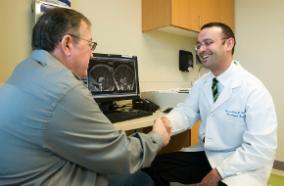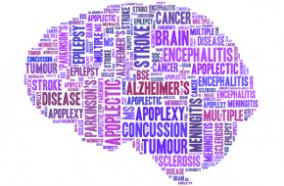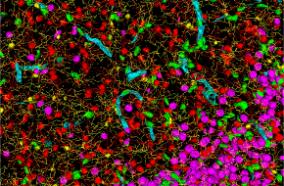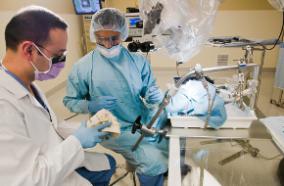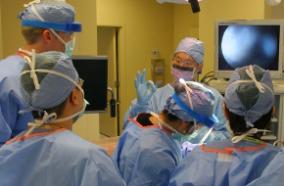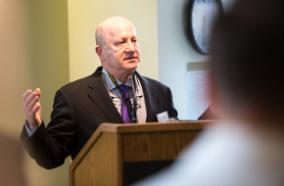4 years 8 months ago
The surface smoothness of composite restorations affects not only their esthetic appearance but also other properties. Thus, rough surfaces can lead to staining, plaque accumulation, gingival irritation, recurrent caries, abrasiveness, wear kinetics, and tactile perception by the patient. The aim of this study was to evaluate the influence of irrigation during the finishing and polishing of composite resin restorations. A systematic search of the PubMed, Cochrane Library, EMBASE, Web of Science,...
João Paulo Silva
4 years 8 months ago
CONCLUSIONS: In an attempt to improve and standardize the use of cervical traction in pediatric patients, the authors have identified 49 best-practice recommendations, which were generated by reaching consensus among a multidisciplinary group of pediatric spine experts using a modified Delphi technique. Further study is required to determine if implementation of these practices can lead to reduced complications and improved outcomes for children.
Nikita G Alexiades
4 years 8 months ago
Domestic violence (DV) is a chronic societal epidemic that often involves physical assault to the head, neck, and face, which increases the risk of traumatic brain injuries (TBIs) in DV victims; however, epidemiological data on the extent of TBI-DV at the population scale remain sparse. We performed a statewide, multi-institution, retrospective review of all medical records for patients diagnosed with a concussion, the most common type of TBI, at medical facilities in Arizona, USA, that were...
Rachel K Rowe
4 years 8 months ago
GPR6 is an orphan GPCR that has enriched expression in the striatopallidal, indirect pathway, medium spiny neurons of the striatum. This pathway is greatly impacted by the loss of the nigro-striatal dopaminergic neurons in Parkinson's disease and modulating this neurocircuitry can be therapeutically beneficial. In this study we describe the in vitro and in vivo pharmacological characterization of CVN424, a highly potent and selective small molecule inverse agonist for GPR6 which is currently...
Nicola L Brice
4 years 8 months ago
The late neuropathological effects of traumatic brain injury have yet to be fully elucidated, particularly with respect to community-based cohorts. To contribute to this critical gap in knowledge, we designed a multimodal neuropathological study, integrating traditional and quantitative approaches to detect pathologic changes in 532 consecutive brain autopsies from participants in the Adult Changes in Thought (ACT) study. Diagnostic evaluation including assessment for chronic traumatic...
Nadia Postupna
4 years 8 months ago
CONCLUSIONS: SMARTTT is expected to generate novel findings regarding the impact, cost, and implementation of an adaptive clinical pharmacist-delivered intervention involving medications and CM to promote smoking abstinence among PWH. ClinicalTrials.govidentifier:NCT04490057.
E Jennifer Edelman
4 years 8 months ago
CONCLUSIONS: The baseline severity of scaphocephaly was similar across procedures and sites. Treatment methods varied, but cranial vault remodeling and strip craniectomy both resulted in satisfactory postoperative CIs. Use of tranexamic acid may reduce the need for transfusion in cranial vault cases. The wide craniectomy technique for strip craniectomy seemed to be associated with change in CI. Both findings seem amenable to testing in a randomized controlled trial.
Cordell M Baker
4 years 8 months ago
Sudden unexpected death in epilepsy (SUDEP) is the leading cause of death in patients with refractory epilepsy. Likely pathophysiological mechanisms include seizure-induced cardiac and respiratory dysregulation. A frequently identified feature in SUDEP cases is that they occur at night. This raises the question of a role for sleep state in regulating of SUDEP. An association with sleep has been identified in a number of studies with patients and in animal models. The focus of this section of the...
Gordon F Buchanan
4 years 8 months ago
CONCLUSIONS: Among patients with resected esophageal or gastroesophageal junction cancer who had received neoadjuvant chemoradiotherapy, disease-free survival was significantly longer among those who received nivolumab adjuvant therapy than among those who received placebo. (Funded by Bristol Myers Squibb and Ono Pharmaceutical; CheckMate 577 ClinicalTrials.gov number, NCT02743494.).
Ronan J Kelly
4 years 8 months ago
Viral genetic tools that target specific brain cell types could transform basic neuroscience and targeted gene therapy. Here, we use comparative open chromatin analysis to identify thousands of human-neocortical-subclass-specific putative enhancers from across the genome to control gene expression in adeno-associated virus (AAV) vectors. The cellular specificity of reporter expression from enhancer-AAVs is established by molecular profiling after systemic AAV delivery in mouse. Over 30% of...
John K Mich
4 years 8 months ago
INTRODUCTION: All major international guidelines for the management of infective endocarditis (IE) have undergone major revisions, recommending antibiotic prophylaxis (AP) restriction to high-risk patients or foregoing AP completely. We performed a systematic review to investigate the effect of these guideline changes on the global incidence of IE.
Michael L Williams
4 years 8 months ago
No abstract
Michael R Levitt
4 years 8 months ago
CONCLUSIONS AND RELEVANCE: In this cohort study of patients with TBI presenting to US level-1 trauma centers, qualitatively distinct profiles of symptoms and cognitive functioning were identified at 2 weeks after TBI. These distinct phenotypes may help optimize clinical decision-making regarding prognosis, as well as selection and stratification for randomized clinical trials.
Benjamin L Brett
4 years 8 months ago
Epidemiology provides an avenue for deciphering disease pathogenesis. By determining incidence across socioeconomic and demographic variables in the context of benign cerebral meningiomas (BCM), epidemiologic data may aid in elucidating and addressing healthcare inequalities. To investigate BCM incidence (per 100,000) with respect to sex, age, income, residence, and race/ethnicity, we queried the largest United States (US) administrative dataset (1997-2016), the National (Nationwide) Inpatient...
Arash Ghaffari-Rafi
4 years 8 months ago
Deep brain stimulation (DBS) of the subthalamic nucleus (STN) is a clinically effective tool for treating medically refractory Parkinson's disease (PD), but its neural mechanisms remain debated. Previous work has demonstrated that STN DBS results in evoked potentials (EPs) in the primary motor cortex (M1), suggesting that modulation of cortical physiology may be involved in its therapeutic effects. Due to technical challenges presented by high-amplitude DBS artifacts, these EPs are often...
Lila H Levinson
4 years 8 months ago
CONCLUSIONS: Therapeutic anticoagulation may be inferior to aspirin for stroke prevention in BCVI. Prospective research is warranted to definitively compare these treatment strategies.
Robert H Bonow
4 years 8 months ago
Diffuse intrinsic pontine glioma (DIPG) is a universally fatal tumor of the brainstem, most commonly affecting young children. Due to its location, surgical resection is not achievable, but consideration of a biopsy has become standard practice at children's hospitals with the appropriate neurosurgical expertise. While the decision to obtain a biopsy should be directed by the presence of atypical radiographic features that call the diagnosis of DIPG into question or the requirement of biopsy...
Matt C Biery
4 years 8 months ago
The Glasgow Outcome Scale-Extended (GOSE) has become one of the most widely used outcome instruments to assess global disability and recovery after traumatic brain injury. Achieving consistency in the application of the assessment remains a challenge, particularly in multi-center studies involving many assessors. We present a manual for the GOSE interview that is designed to support both single- and multi-center studies and promote inter-rater agreement. Many patients fall clearly into a...
Lindsay Wilson
4 years 8 months ago
ED-INNOVATION (Emergency Department-INitiated bupreNOrphine VAlidaTION) is a Hybrid Type-1 Implementation-Effectiveness multisite emergency department (ED) study funded through The Helping to End Addiction Long-term^(SM) Initiative, or NIH HEAL Initiative^(SM) efforts to increase access to medications for opioid use disorder (OUD). We use components of Implementation Facilitation to enhance adoption of ED-initiated buprenorphine (BUP) at approximately 30 sites. Subsequently we compare the...
Gail D'Onofrio
4 years 9 months ago
Vascular anomalies, including local and peripheral thrombosis, are a hallmark of glioblastoma (GBM) and an aftermath of deregulation of the cancer cell genome and epigenome. Although the molecular effectors of these changes are poorly understood, the upregulation of podoplanin (PDPN) by cancer cells has recently been linked to an increased risk for venous thromboembolism (VTE) in GBM patients. Therefore, regulation of this platelet-activating protein by transforming events in cancer cells is of...
Nadim Tawil
"university of washington"[affiliation] and neurological surge...: Latest results from PubMed
More posts about UW Neurological Surgery Recent PubMed Publications

